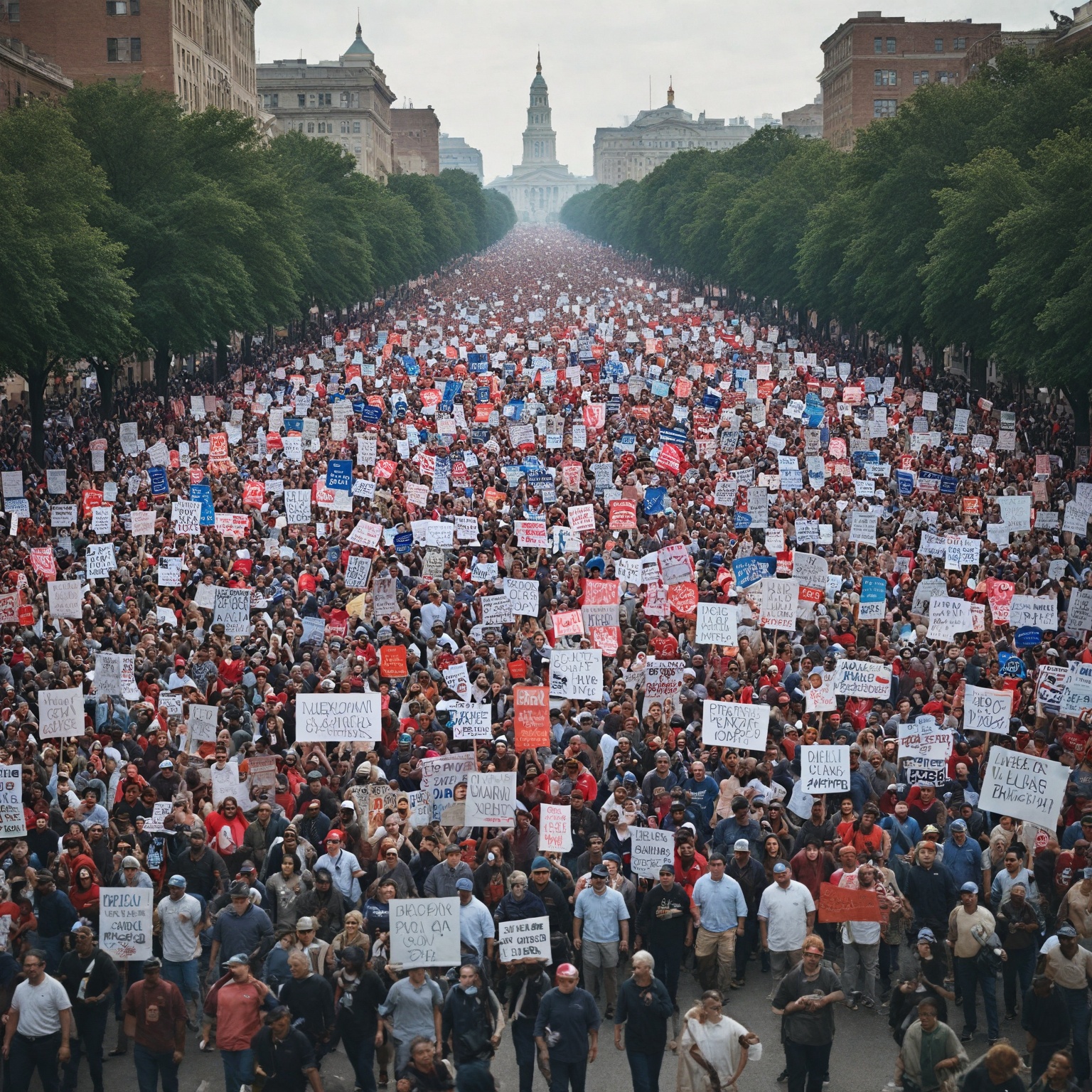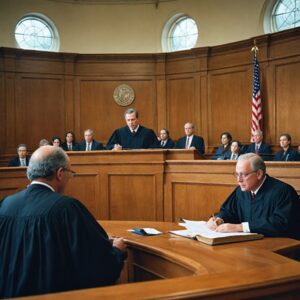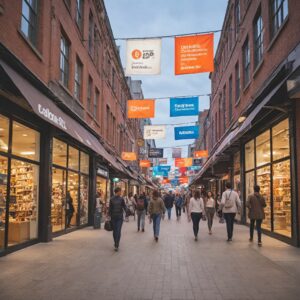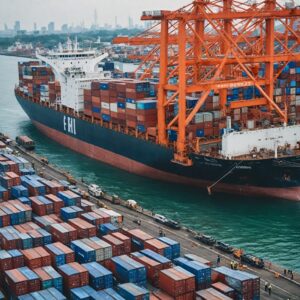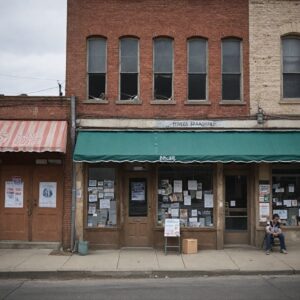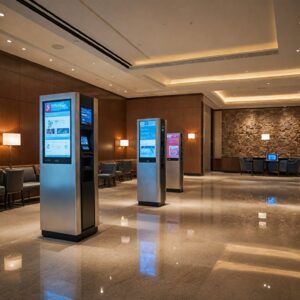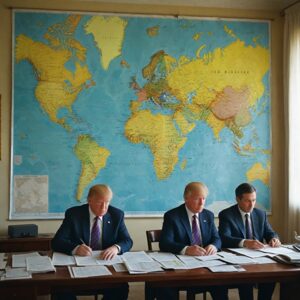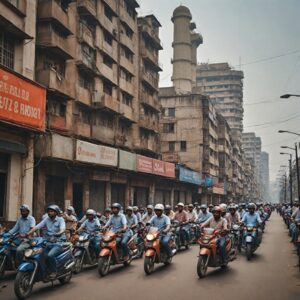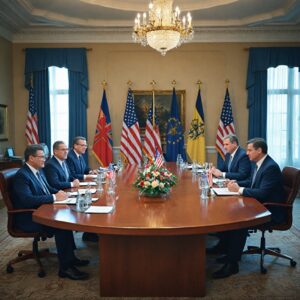Summary
Massive protests against former President Donald Trump’s administration have represented one of the most sustained and widespread movements of political dissent in recent American history. Beginning immediately after Trump’s first electoral victory in 2016 and continuing with renewed intensity following his 2024 re-election, these protests have mobilized millions of participants across all 50 states. Organized by a broad coalition of grassroots groups, labor unions, civil rights organizations, and advocacy networks, the demonstrations have addressed a wide array of grievances, including opposition to Trump’s rhetoric, immigration policies, federal budget cuts to social programs, and the influence of figures like Elon Musk within his administration.
The protests have taken diverse forms, ranging from large-scale rallies and marches—such as the historic Women’s March in 2017—to coordinated simultaneous actions in thousands of locations nationwide, exemplified by the 2025 “Hands Off” and “50501” movements. While predominantly peaceful and family-friendly, some demonstrations have involved clashes with law enforcement, vandalism, and arrests, raising contentious debates about protest tactics, public safety, and the right to dissent. Law enforcement responses have included deployments of the National Guard and expanded policing in cities like Los Angeles, eliciting criticism from local officials and civil liberties advocates alike.
The movement’s organizers emphasize demands to end what they term a “billionaire takeover” of government, restore funding for social safety net programs such as Medicaid and Social Security, and protect immigrant, LGBTQ+, and marginalized communities from perceived attacks. Utilizing digital platforms and decentralized coordination, the protests have broadened their geographic and demographic reach, engaging communities in both liberal urban centers and conservative-leaning smaller towns. The activism reflects a strategic shift from symbolic mass demonstrations toward sustained, localized resistance focused on economic and social justice issues.
Despite the protests’ scale and influence, they have been accompanied by controversies and political backlash. Allegations by Trump and allies falsely accusing former President Barack Obama of orchestrating the unrest have been debunked, while some critics condemn the protests as excessively confrontational or divisive. Concurrently, numerous states have introduced anti-protest legislation aimed at limiting future demonstrations, highlighting an ongoing struggle over civil liberties in the United States. The legacy of these protests includes strengthened grassroots networks and a transformed landscape of American political activism marked by persistent engagement and multifaceted resistance to Trump-era policies.
Background
Massive protests against Donald Trump’s presidency began immediately following his electoral victory and inauguration in January 2017. These demonstrations arose in response to a wide array of grievances, including opposition to Trump’s campaign rhetoric, his alleged history of sexual misconduct, and controversial presidential actions such as the 2017 travel ban and the 2018 family separation policy at the U.S.–Mexico border. The protests have taken various forms, including rallies, marches, walk-outs, business closures, petitions, and sit-ins, reflecting a broad and sustained resistance movement that critics have described as unprecedented in vigor and scope for a new administration.
The largest single-day protest in U.S. history occurred on January 21, 2017, with the Women’s March on Washington and simultaneous demonstrations nationwide, drawing an estimated 3.3 to 4.6 million participants across all 50 states and several continents. The Women’s March, organized in part to oppose the Trump administration’s policies, called for wide-ranging social and political reforms, including an end to corruption, preservation of social safety nets such as Medicaid and Social Security, and protection of immigrant and LGBTQ+ rights. Subsequent protests maintained momentum, addressing evolving issues such as immigration policies and tax transparency, and included strikes and boycotts like the one on March 8, 2017, International Women’s Day.
Grassroots organizers played a significant role in coordinating protests across large cities and smaller communities alike, ensuring a persistent nationwide presence of resistance. Demonstrations have not been without conflict; some have resulted in arrests due to vandalism, violence, or clashes with supporters of the administration. The federal response to certain protests and immigration enforcement actions has further fueled unrest, particularly in California, where state and local authorities criticized the Trump administration’s deployment of federal troops and aggressive immigration raids as politically motivated and disruptive.
The protests also attracted symbolic acts of resistance, such as the “first protest in space” by the Autonomous Space Agency Network, and efforts to preserve or remove public symbols associated with Trump, including disputes over his Hollywood Walk of Fame star. Organizers framing these actions often drew parallels to historical struggles against tyranny, invoking revolutionary rhetoric to emphasize their opposition to what they perceived as civil rights violations and threats to constitutional norms.
Timeline of Events
Protests against Donald Trump and associated initiatives began early in 2025, intensifying in both scale and geographic spread over the following months. On February 5, 2025, a series of demonstrations took place under the banner “Not My Presidents Day,” referencing the timing on Presidents’ Day. These protests targeted Trump, Elon Musk, and Project 2025, and were held in state capitals and cities nationwide. Later in February and early March, additional organized actions occurred, including the Economic Blackout boycott and the Stand Up for Science 2025 campaign.
The resistance escalated significantly on April 5, 2025, with the launch of the Hands Off protests, described as the largest single-day nationwide demonstration against Trump’s second administration at that time. These protests took place in over 1,400 locations across all 50 states and drew an estimated three to five million participants according to organizers. Unlike earlier protests focused largely on Washington, D.C., the Hands Off movement spread to state capitols, federal buildings, congressional offices, Social Security headquarters, parks, and city halls nationwide.
Demonstrations on April 5 included hundreds of protesters in Lafayette Square, New Orleans, where local officials spoke, and even featured symbolic acts such as a Cybertruck piñata. While most protests were peaceful and family-friendly, some incidents of vandalism and violence were reported, leading to at least 40 arrests, with law enforcement emphasizing accountability for those engaging in destructive acts. One planned demonstration in Little Rock was postponed to April 12 due to severe weather conditions on the original date. The Hands Off protests brought together a coalition of over 150 progressive, labor, pro-democracy, civil rights, LGBTQ+, and women’s rights groups, making it a broad and diverse movement.
Following the momentum of the Hands Off protests, the 50501 group — short for “50 protests, 50 states, one day” — announced plans for a nationwide demonstration on April 19, 2025, aiming to oppose what they described as a “hostile government takeover” by the Trump administration.
These events form part of a larger continuum of opposition to Trump’s policies and rhetoric, building upon protests that have occurred since his first inauguration in 2017. The 2024 presidential election victory and the commencement of Trump’s second term sparked this renewed wave of activism.
Organizers and Coordination
The massive protests against the Trump administration were spearheaded by a broad and diverse coalition of organizations, encompassing civil rights groups, veterans, women’s rights advocates, labor unions, and LGBTQ+ communities. Prominent among these were grassroots movements such as Indivisible, MoveOn, and the 50501 Movement, a group named for its mission to hold 50 protests in 50 states on the same day. The coalition also included established grassroots groups like Working Families and newer collectives that emerged through online platforms, including Reddit, exemplified by 50501’s organic grassroots energy.
Organizers articulated clear demands centered around ending what they termed the “billionaire takeover” and rampant corruption within the Trump administration, protecting federal funding for social safety net programs such as Medicaid and Social Security, and resisting attacks on immigrants, transgender people, and other marginalized communities. They also aimed to shift the protest narrative toward economic issues affecting everyday Americans, highlighting the administration’s impact on healthcare, Social Security, and the economy, rather than focusing solely on high-profile political demonstrations of previous years.
Coordination efforts emphasized localized, community-driven actions, moving away from singular large-scale marches to hundreds of smaller events held simultaneously across towns and cities of varying sizes, including traditionally conservative areas. This approach expanded the reach of the protests, drawing participants from urban centers like New York, Chicago, and Washington, D.C., as well as from smaller red-state cities such as Salt Lake City, Utah, and Missoula, Montana. Social media and digital platforms played a critical role in organizing and promoting these events, with groups like 50501 encouraging participation through Instagram and mobilize.us, even as new anti-protest legislation threatened to complicate organizing efforts in 2025.
The collaborative nature of the protests was underscored by the involvement of over 150 progressive, labor, pro-democracy, and rights organizations, all united under the “Hands Off!” banner for a coordinated nationwide response. This coalition drew on previous experience from protests during the first Trump administration while integrating fresh energy from newer movements and grassroots activists. The extensive network of local Indivisible groups—numbering over 6,000 nationwide—also played a significant role in mobilizing participants and maintaining momentum for the demonstrations.
Despite the scale and coordination of the protests, organizers stressed non-violence and partnership with law enforcement where possible, although some events did experience arrests related to vandalism and confrontations with police. The organizational efforts reflected a sophisticated blend of digital activism, coalition-building, and community engagement aimed at sustaining long-term resistance to policies they viewed as harmful to democratic values and social equity.
Scale and Geographic Distribution
The protests against President Trump’s policies rapidly escalated into one of the largest nationwide movements in recent history, with demonstrations organized in over 1,400 locations spanning all 50 states. According to organizers, these events collectively drew between three to five million participants across the United States, marking them as the largest single-day protests during Trump’s second term until mid-2025. The broad coalition behind these protests included more than 150 groups encompassing progressive, labor union, pro-democracy, civil rights, LGBTQ+, and women’s rights organizations.
Major urban centers saw some of the largest gatherings. In New York City, a protest stretched nearly 20 blocks along Fifth Avenue, while Chicago witnessed thousands filling Daley Plaza and surrounding streets. The nation’s capital experienced tens of thousands of demonstrators encircling the Washington Monument. Atlanta’s police estimated that over 20,000 people marched to the statehouse, and Portland, Oregon, hosted several thousand participants. Other significant gatherings occurred in cities such as San Jose, Berkeley, Seattle, Salt Lake City, and Missoula, demonstrating the movement’s reach into both traditionally liberal “blue” cities and smaller urban areas in conservative states.
Smaller communities and suburbs also actively participated. For example, several hundred marched in front of the Ogle County Courthouse in Oregon and in Sterling, Illinois, while hundreds gathered in Maplewood, New Jersey, despite adverse weather conditions. Protests extended to numerous other locations including Bloomington, Fort Wayne, Goshen, South Bend, and Lafayette in Indiana; Hilo, Kailua-Kona, Lanai City, Lihue, and Waimea in Hawaii; and various cities throughout California, including Los Angeles, where protests erupted following Immigration and Customs Enforcement raids.
Beyond the continental U.S., solidarity protests occurred internationally, such as a large rally at Trafalgar Square in London attended by over 100,000 people, with prominent speakers including UK opposition leader Jeremy Corbyn. Domestically, symbolic landmarks like the John A. Wilson Building in Washington, D.C., One World Trade Center and New York City Hall were lit in green to signal protest.
These demonstrations were notable for their sustained momentum and inclusivity, involving a mixture of pre-existing organizations and widespread grassroots participation. The movement’s geographic breadth underscored a nationwide repudiation of the Trump administration’s immigration and federal policies, encompassing a diverse array of communities from major metropolitan hubs to small towns across political divides.
Protest Methods and Tactics
The protests against the Trump administration employed a wide range of methods and tactics to voice opposition and mobilize support. These included traditional rallies, demonstrations, and marches as well as walk-outs, business closures, petitions, and community service-oriented events such as food drives, teach-ins, and volunteering at local shelters. Some protests specifically targeted symbolic locations or individuals associated with the administration; for example, demonstrations were held outside Tesla dealerships to criticize billionaire Trump adviser Elon Musk’s role in downsizing the federal government, while anti-Trump protesters blocked the headquarters of Uber in San Francisco, resulting in arrests for creating human chains to obstruct the offices.
A notable strategy seen in the 2025 nationwide protests, including those organized by the grassroots group 50501, was the simultaneous coordination of protests in all 50 states on a single day, aiming to convey widespread opposition to what organizers described as a “hostile government takeover” by the Trump administration. These coordinated efforts often involved coalitions of over 150 progressive, labor union, pro-democracy, civil rights, LGBTQ+, and women’s rights groups, reflecting a broad base of support and strategic partnership across diverse communities.
Most protests remained peaceful and family-friendly, with participants carrying signs promoting resistance to perceived oligarchy, misinformation, and attacks on vulnerable communities. However, some protests experienced actionable conduct such as vandalism, assaults on Trump supporters, and violence, leading to arrests and criminal charges for rioting. For instance, 230 people were arrested in certain demonstrations, with 217 federally charged with felony rioting, offenses punishable by up to 10 years in prison and substantial fines. Law enforcement and officials, including Los Angeles County District Attorney Nathan Hochman, emphasized the necessity of non-violence and warned that destructive actions would be prosecuted to the fullest extent of the law. Similarly, officials highlighted the distinction between lawful protest and criminal behavior in response to social media posts depicting “violent rioters”.
Organizers and participants often stressed unity, partnership, and non-violence as core principles of their activism, recognizing the heightened risks faced by vulnerable populations such as immigrants who might avoid public rallies due to fears of Immigration and Customs Enforcement (ICE) actions. Protesters sought to maintain peaceful demonstrations while expressing urgent opposition to policies affecting marginalized groups, including immigrants, trans people, and working-class Americans. This approach aimed to counteract attempts by the administration to redirect public anger toward internal enemies and to suppress dissent across cultural institutions, media, and other sectors.
The diversity in protest tactics—from mass marches in large cities to grassroots community actions in smaller towns, and from symbolic blockades to service-oriented events—demonstrated the multifaceted nature of the resistance movement. The strategic use of peaceful assembly alongside targeted disruptions sought both to raise awareness and to pressure political leaders to address protesters’ demands.
Security Measures and Law Enforcement
In response to the widespread protests against President Trump’s policies, law enforcement agencies at multiple levels implemented extensive security measures to maintain order. The California National Guard was activated and deployed to Los Angeles following federal immigration raids and escalating tensions in the city. Over 700 Marines were also sent to protect federal property and personnel, indicating the federal government’s intent to bolster security amid growing unrest.
Governor Gavin Newsom took swift action by authorizing the surge of more than 800 additional state and local law enforcement officers into Los Angeles to support the Los Angeles Police Department (LAPD) and Los Angeles Sheriff’s Department. This mobilization was coordinated with the California Governor’s Office of Emergency Services and involved mutual aid requests from agencies both within and outside Los Angeles County. These officers aimed to address incidents of vandalism, looting, and violence linked to the protests, which resulted in at least 40 arrests in the city. The District Attorney emphasized that while peaceful dissent was protected, violent acts against people and property would face full prosecution.
Despite efforts to maintain peace, confrontations between protesters and authorities did occur. Anti-ICE demonstrators clashed with law enforcement as the deployment of National Guard troops stirred tensions. Governor Newsom’s office publicly challenged federal characterizations of protesters as “violent rioters,” drawing parallels to the January 6th Capitol attack and criticizing President Trump’s response to the situation. Los Angeles Mayor Karen Bass also opposed the federal deployment, underscoring local resistance to the militarization of the protests.
The security response extended beyond Los
Messages, Demands, and Political Goals
The protests against former President Donald Trump and his administration have been driven by a broad coalition of organizations including civil rights groups, veterans, women’s rights advocates, labor unions, and LGBTQ+ activists such as Indivisible. The organizers articulated three core demands: an end to what they termed the billionaire takeover and corruption of the Trump administration; a halt to cuts in federal funding for essential programs like Medicaid and Social Security that support working people; and a cessation of attacks on immigrants, transgender individuals, and other marginalized communities.
Protesters voiced opposition not only to Trump’s policies and rhetoric but also to specific figures within his cabinet, notably Elon Musk, whose role as an adviser and actions within the administration drew significant ire. Demonstrators highlighted concerns about Musk’s influence on downsizing the federal government and policies perceived as harmful to civil rights and constitutional protections, including efforts to deport immigrants and reduce the size of federal agencies by firing thousands of government workers. This discontent was often expressed with slogans invoking resistance to tyranny and calls for democratic empowerment, such as “No kings,” “Hands off,” and “The people, united, will never be divided”.
The protests aimed to shift the public discourse from large-scale demonstrations focused on symbolic issues to hundreds of local gatherings emphasizing concrete pocketbook concerns such as healthcare, Social Security, and economic inequality. Organizers sought to highlight how Trump’s presidency was perceived to make life harder for average Americans while enriching his wealthiest allies. This approach contrasted with earlier mass protests like the 2017 Women’s March and was intended to mobilize widespread community engagement rather than rely solely on major urban demonstrations.
In addition to opposing federal budget cuts and attacks on social programs, the protests expressed deep resistance to Trump’s immigration policies, including family separations and attempts to deport undocumented immigrants. These actions spurred large-scale demonstrations and civil disobedience, including sit-ins and blockades at immigration enforcement offices. The activism also responded to Trump’s contested 2020 election claims and his 2024 re-election campaign promises, with protestors rallying against what they described as an unlawful agenda threatening democratic norms.
Some protest events incorporated elements of community service such as food drives and volunteer work, reflecting a broader strategy of constructive resistance. Despite widespread participation, organizers noted challenges in inclusivity, as some protests revealed socio-economic divides among participants, with minority and lower-paid women less able to join due to work constraints.
Public and Political Reactions
The widespread protests against President Trump’s administration have elicited strong reactions from both the public and political figures. Demonstrators have voiced disapproval over various campaign promises, policy decisions, and the makeup of the Cabinet during Trump’s second term, particularly targeting Elon Musk’s role and influence within the administration. Protest organizers articulated clear demands including ending what they described as a “billionaire takeover” and systemic corruption, restoring federal funding for social programs like Medicaid and Social Security, and halting attacks on marginalized communities such as immigrants and transgender people.
Public response to these demonstrations has been significant and at times unexpected, with organizers and observers noting one of the largest single-day protests in recent years. Events drew millions of participants across all 50 states and involved a coalition of over 150 progressive, labor, civil rights, and advocacy groups. Protests have been largely peaceful, family-friendly, and diverse in participation, with demonstrators carrying slogans like “Resist the Oligarchy,” “No kings,” and “Hands off,” reflecting a broad opposition to perceived authoritarian tendencies in the administration. However, some protests have also seen instances of vandalism and confrontations leading to arrests and charges related to rioting.
Politically, the response has included efforts to manage unrest and assert control. For example, in Los Angeles, Governor Gavin Newsom deployed over 800 additional state and local law enforcement officers following large-scale protests and the controversial federalization of the National Guard by the President. Meanwhile, legislative reactions have included the introduction of multiple anti-protest bills in various states, many spearheaded by Republican lawmakers, aiming to restrict protest activities and impose harsher penalties. These legal measures have raised concerns about civil liberties and the right to protest, especially as protests continue to expand in scale and frequency.
The ongoing mobilization has been facilitated by grassroots organizations such as 50501, which coordinates nationwide days of action against what it labels a “hostile government takeover.” Despite the challenges posed by new anti-protest legislation, these movements maintain momentum, encouraging widespread public participation and sustained political pressure. The public outcry underscores a broader resistance to the Trump administration’s approach to governance, emphasizing democratic values and social justice across the country.
Controversies and Criticisms
Protests against Donald Trump have been marked by a range of controversies and criticisms from various sides. While the majority of demonstrations have been peaceful, there have been instances of vandalism, assaults on Trump supporters, and other actionable conduct leading to some protesters being criminally charged with rioting. Several hoaxes have also circulated within the context of the protests, including falsely claimed images depicting attacks on Trump supporters that involved actors from television series, which were debunked and met with public backlash from those misrepresented.
Trump and his allies have frequently alleged that former President Barack Obama was behind the protests, asserting that Obama and his affiliates orchestrated demonstrations to undermine the Trump administration. However, no evidence has been found linking Obama or his associated nonprofit, Organizing for Action, to the protest activities. Trump blamed Obama for both the protests and leaks within his administration during interviews, but these claims remain unsubstantiated.
The protests have drawn criticism from various political commentators and figures. For instance, feminist icon Camille Paglia sharply criticized Democratic Party leadership, particularly Senate Minority Leader Chuck Schumer, for what she described as a failure to exert moral authority in the wake of Trump’s election. She characterized the party’s response as “an abject failure of leadership” and condemned the nationwide protests as a “orgy of rage and spite”. Additionally, some international observers, such as the Chinese Consulate in San Francisco, cautioned Chinese nationals against participating in protests, reflecting concerns about political stability and safety.
On the other hand, the protests themselves have faced scrutiny for escalating tensions, particularly in cities like Los Angeles, where immigration-related demonstrations led to clashes with law enforcement and the deployment of National Guard troops. The merging of protests with differing aims sometimes increased confrontations, leading to heightened tensions on the ground.
Critics have also highlighted efforts by the Trump administration to suppress dissent across various sectors, including cultural institutions, media companies, and universities. This strategy has been interpreted as an attempt to redirect public anger toward perceived internal enemies such as Immigration and Customs Enforcement (ICE) rather than the government itself. Some analysts argue that this diversion tactic, coupled with right-wing media support, aims to distract from policy failures and Trump’s contentious relationship with figures like Elon Musk.
Protest organizers have faced the challenge of maintaining momentum and focus amid these controversies. Shifting from large, high-profile demonstrations like the 2017 Women’s March, groups such as Indivisible and MoveOn have pursued smaller, localized gatherings to emphasize issues affecting everyday Americans, including healthcare and Social Security. However, this tactical evolution has also led to debates about the effectiveness and scale of the resistance movement.
Impact and Consequences
The widespread protests against former President Donald Trump have had significant political and social repercussions across the United States. These demonstrations have energized progressive elements within the Democratic Party, amplifying their opposition to Trump’s policies and agenda. According to Democratic strategist Ace Smith, the protests have helped intensify the party’s outrage and fostered more disruptive tactics among members of Congress, effectively ending internal debates over whether to cooperate with Trump or oppose him universally. The Los Angeles Times noted that the heightened activism quickened the “outrage metabolism” among lawmakers, contributing to a more unified and confrontational Democratic caucus.
Beyond the political arena, the protests have spurred legislative reactions, particularly from Republican lawmakers. By early 2017, at least 18 states had proposed anti-protest bills designed to restrict certain protest tactics and increase penalties for unlawful activities, with the number rising to 20 by mid-May. Many of these laws were criticized by the American Civil Liberties Union (ACLU) as unconstitutional, reflecting a broader crackdown on protest activity inspired by the post-2016 election demonstrations. In 2025, this trend continued with 41 new anti-protest bills introduced in 22 states, potentially hampering future mass mobilizations.
The scale and diversity of the protests also demonstrate a notable shift in public engagement. Demonstrations occurred not only in traditional Democratic strongholds but also in smaller cities and conservative communities, signaling a nationwide resistance that transcended usual political and geographic divides. Events ranged from large metropolitan rallies in cities like New York, Chicago, and Washington, D.C., to smaller gatherings in places such as Salt Lake City, Utah, and Missoula, Montana. This broad participation surprised organizers and observers alike, highlighting a sustained and multifaceted opposition movement.
Moreover, the protests addressed a wide array of grievances, including opposition to federal budget cuts to social programs like Medicaid and Social Security, denouncements of immigrant and LGBTQ+ community attacks, and criticism of Trump’s cabinet appointments, including Elon Musk’s involvement. The protests have been notable for their inclusive and family-friendly atmosphere in many locations, exemplified by peaceful demonstrations with multigenerational participation.
The movement’s persistence and adaptability have also led to innovative forms of protest, such as the “first protest in space” organized by the Autonomous Space Agency Network in 2017, illustrating the creativity and determination of the resistance. Additionally, the involvement of both established organizations like Indivisible and grassroots movements such as the 50501 Movement has helped sustain momentum and expand reach, with millions reportedly participating in coordinated nationwide actions.
Legacy and Long-Term Effects
The massive protests against Donald Trump and his administration left a significant and multifaceted legacy on American political activism and public discourse. Organizers and participants alike noted that the movement marked a shift from large-scale, symbolic demonstrations to more localized, sustained activism focused on tangible pocketbook issues such as healthcare, Social Security, and the broader economic impact of government policies. This strategic pivot aimed to connect political dissent with everyday concerns, broadening the movement’s appeal beyond traditional partisan lines.
One of the notable long-term effects was the strengthening and expansion of grassroots networks. Movements like 50501, which originated on Reddit and quickly grew into a nationwide coalition, exemplified this trend by mobilizing millions across the country and fostering coordination for ongoing actions. The 50501 Movement, for instance, capitalized on the momentum by declaring specific nationwide days of action, demonstrating the persistence and organizational evolution beyond initial protests. Such grassroots initiatives also highlighted the increasingly prominent role of digital platforms in organizing and sustaining activism.
Additionally, the protests underscored the resilience and adaptability of California’s mutual aid and emergency response frameworks, which have supported coordinated law enforcement and community responses during large-scale demonstrations. This infrastructure proved essential in maintaining peaceful and family-friendly protest environments, as observed in cities like Portland, where demonstrators combined spirited activism with inclusivity.
Politically, the protests sent clear warnings about the potential consequences of the Trump administration’s policies. Prominent figures like Senator Ted Cruz voiced concerns that tariffs and trade policies could precipitate economic downturns, leading to electoral losses for Republicans in upcoming midterms. Meanwhile, protest organizers demanded systemic changes, including an end to what they described as corruption, budget cuts to social programs, and attacks on vulnerable communities, framing their dissent within broader calls for social justice and governmental accountability.
However, the movement faced challenges from newly introduced legislation aimed at curbing protest activities. In 2025, at least 41 anti-protest bills were introduced across 22 states, potentially restricting the ability of citizens to engage in public demonstrations. This legal pushback signified a contentious and ongoing battle over the right to protest, highlighting the enduring tensions between grassroots activism and institutional power.

